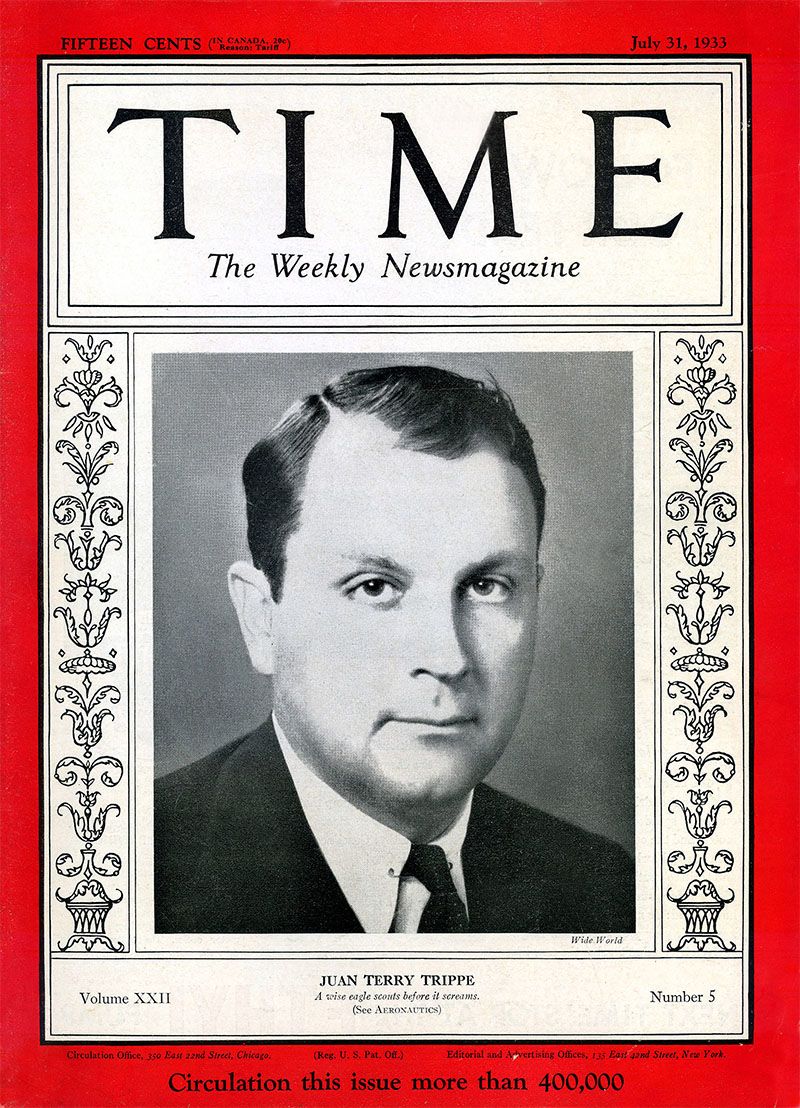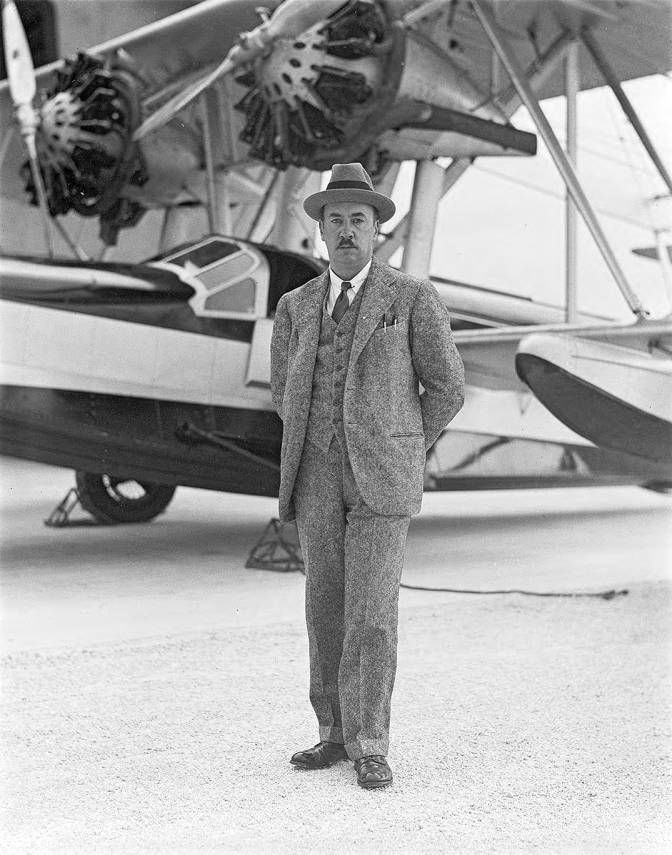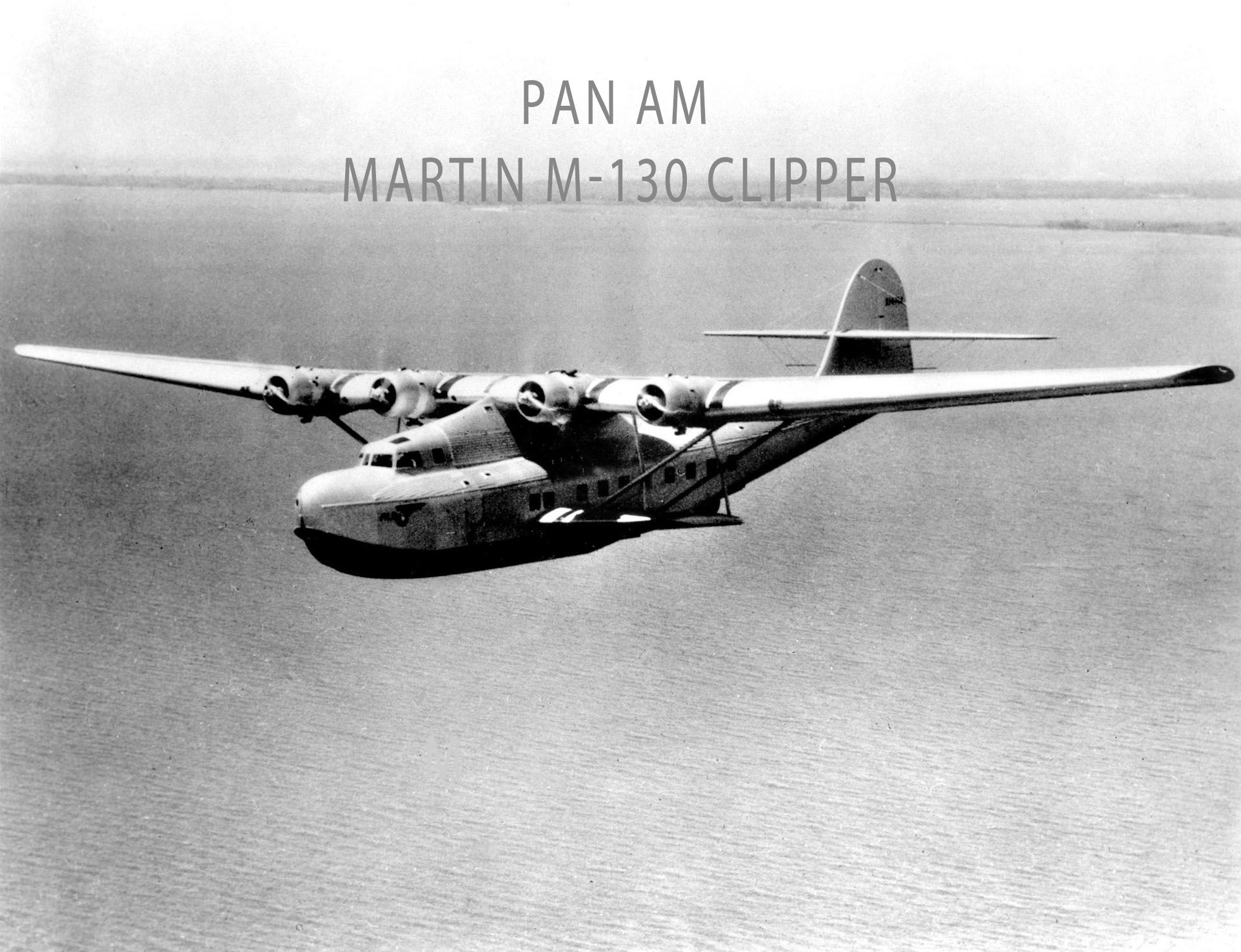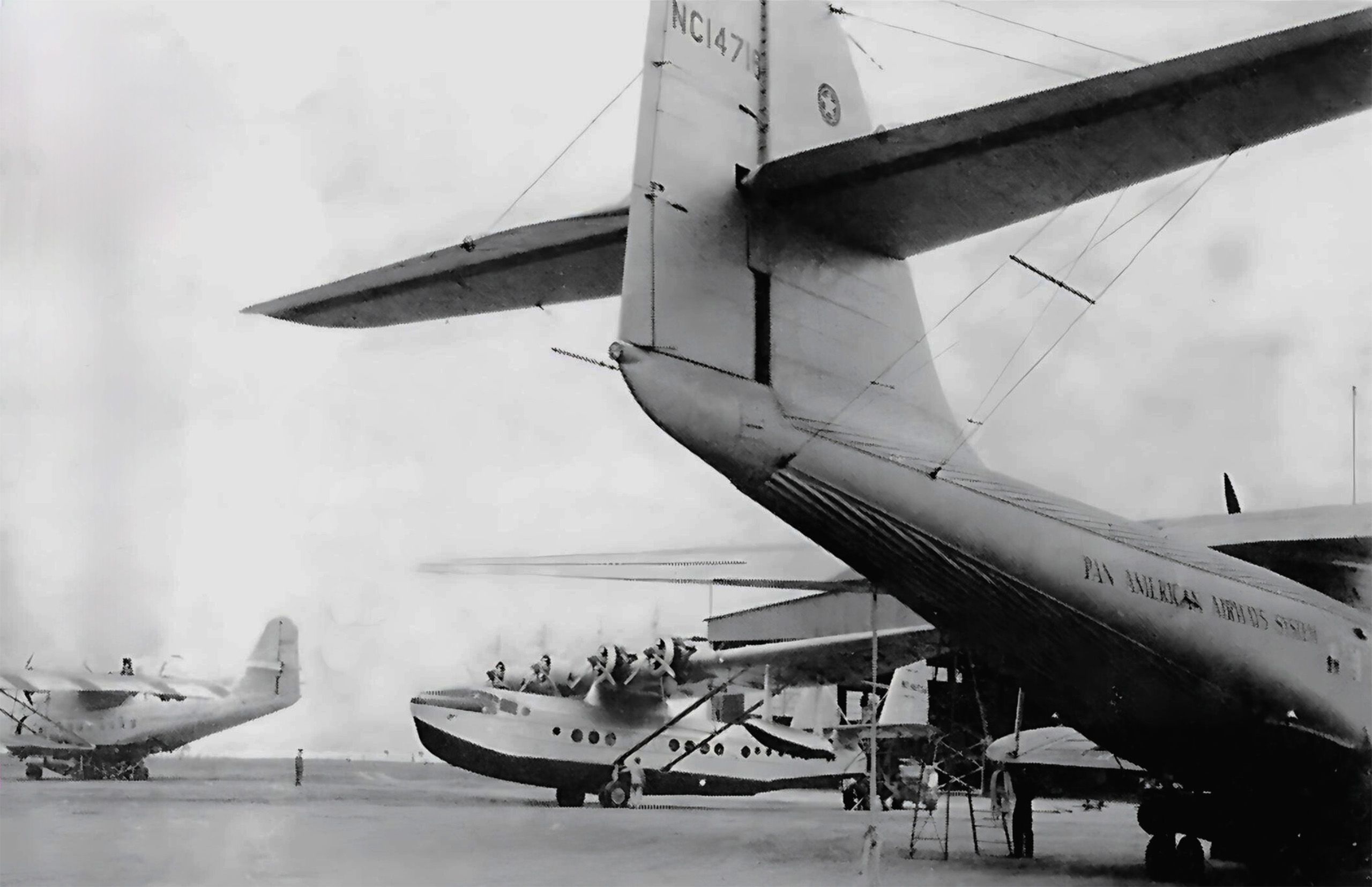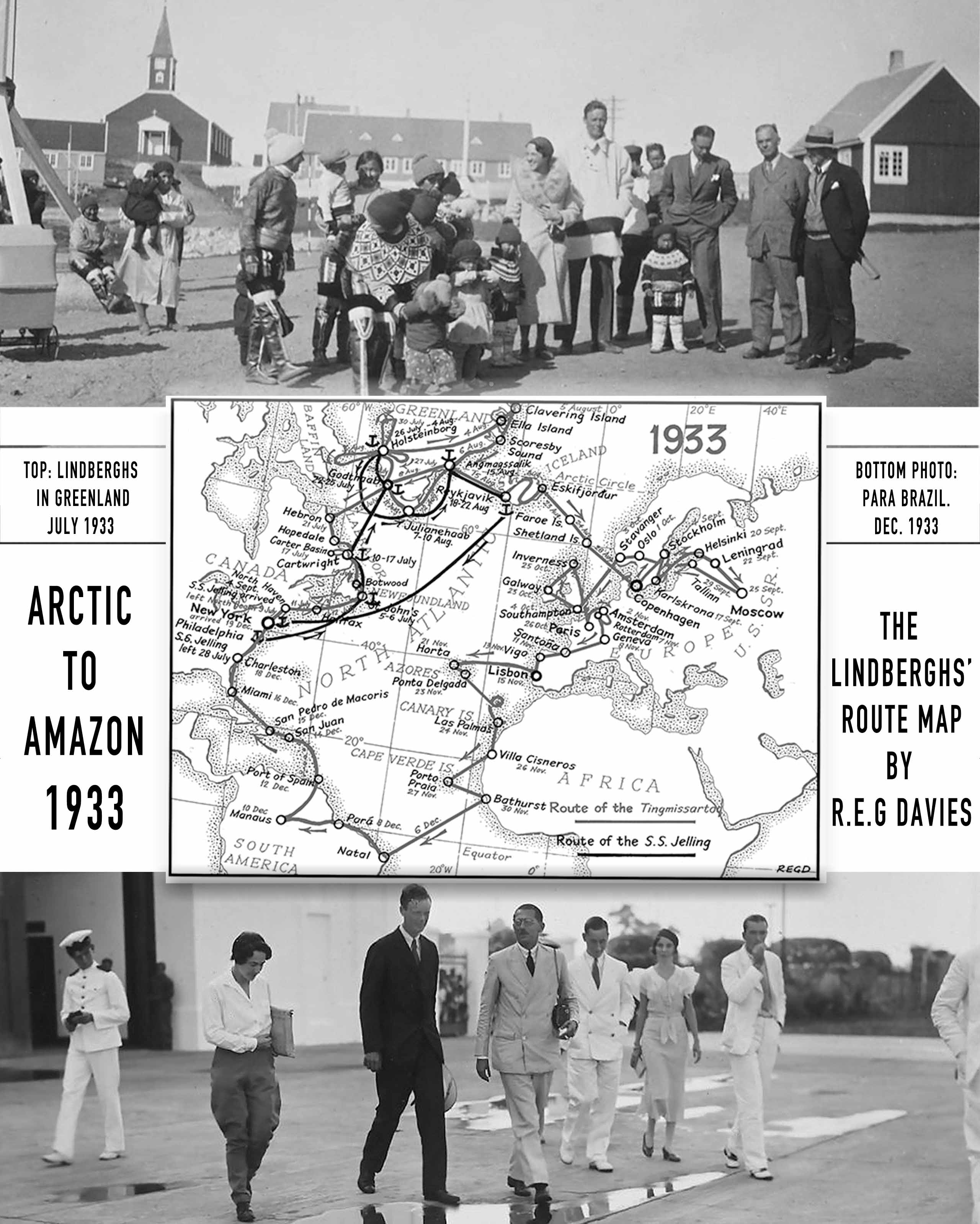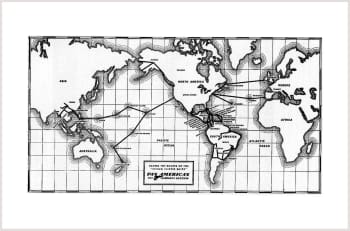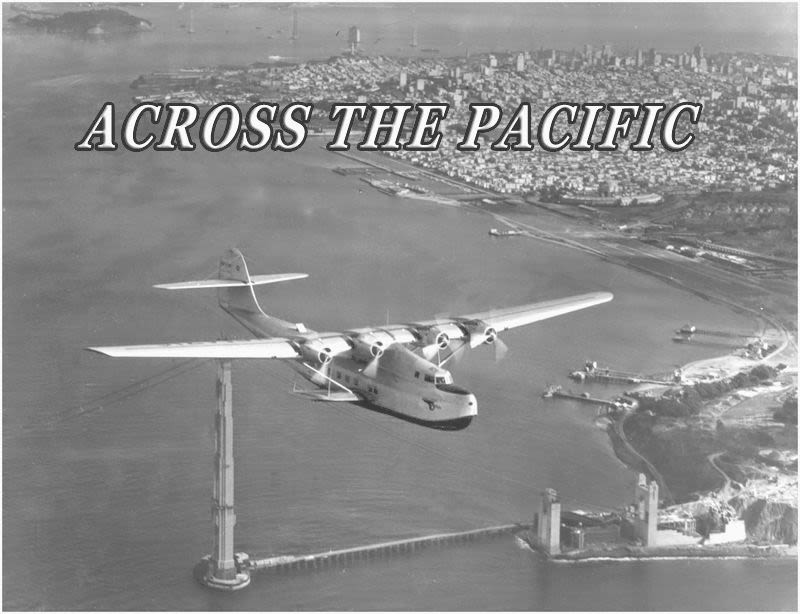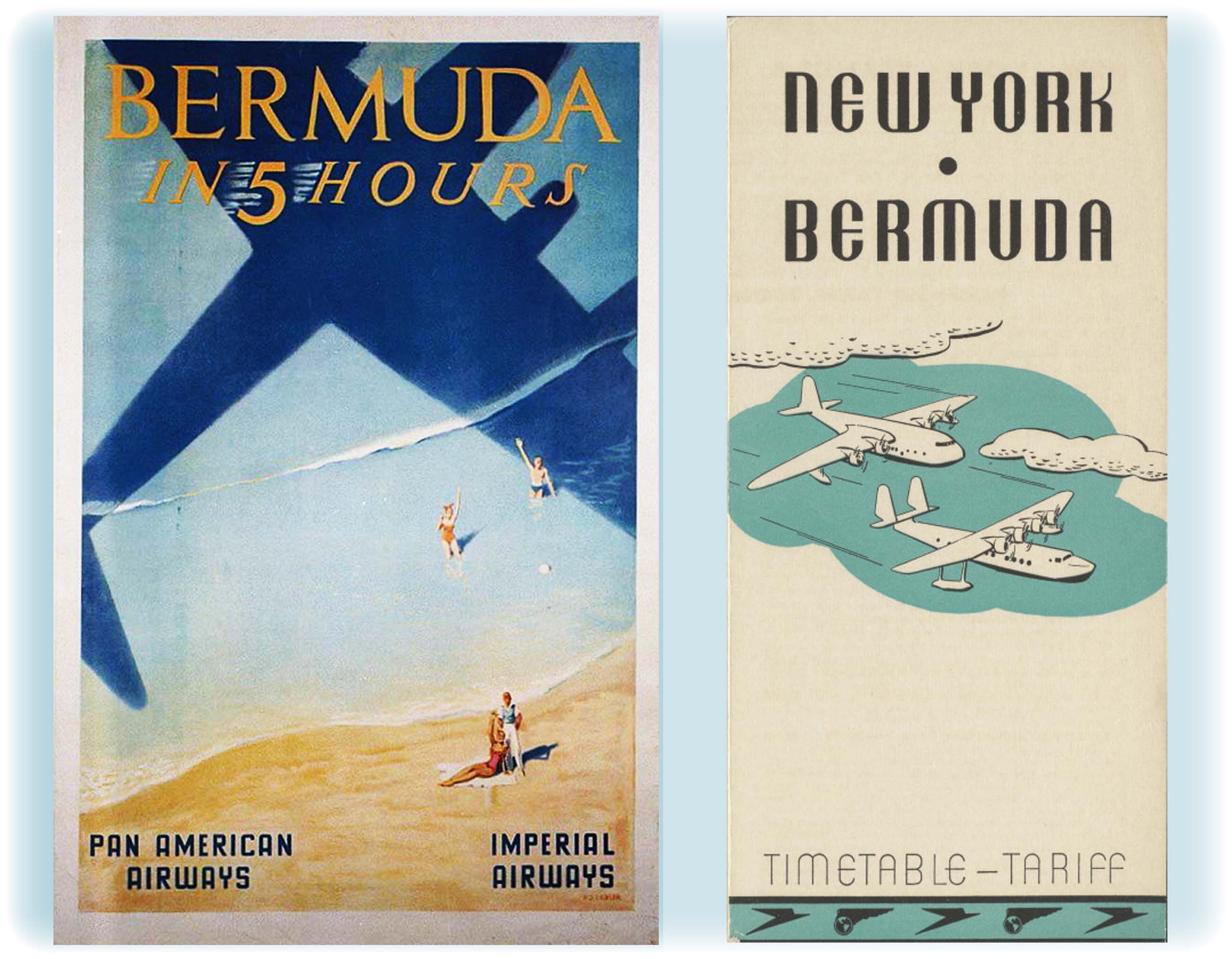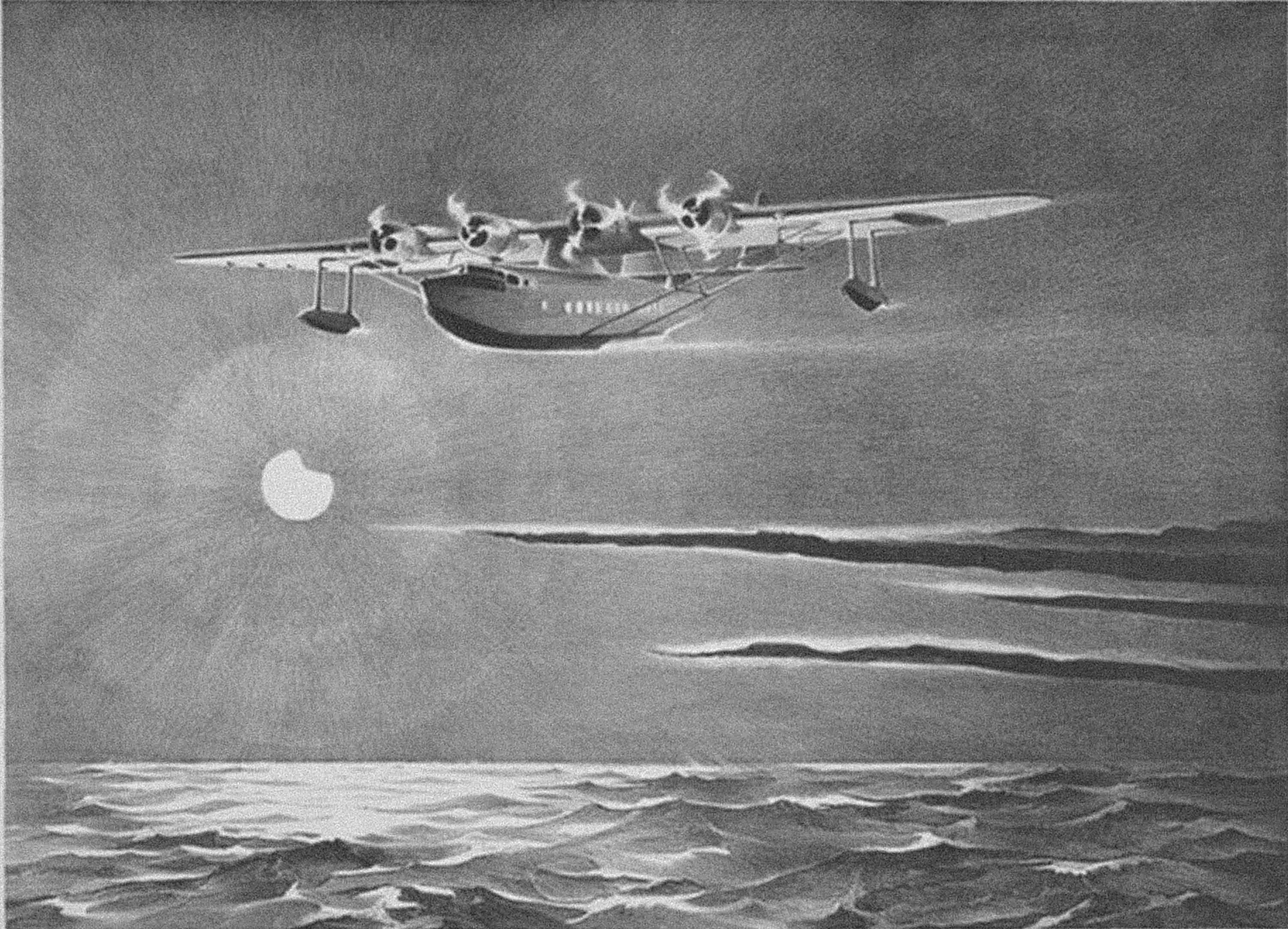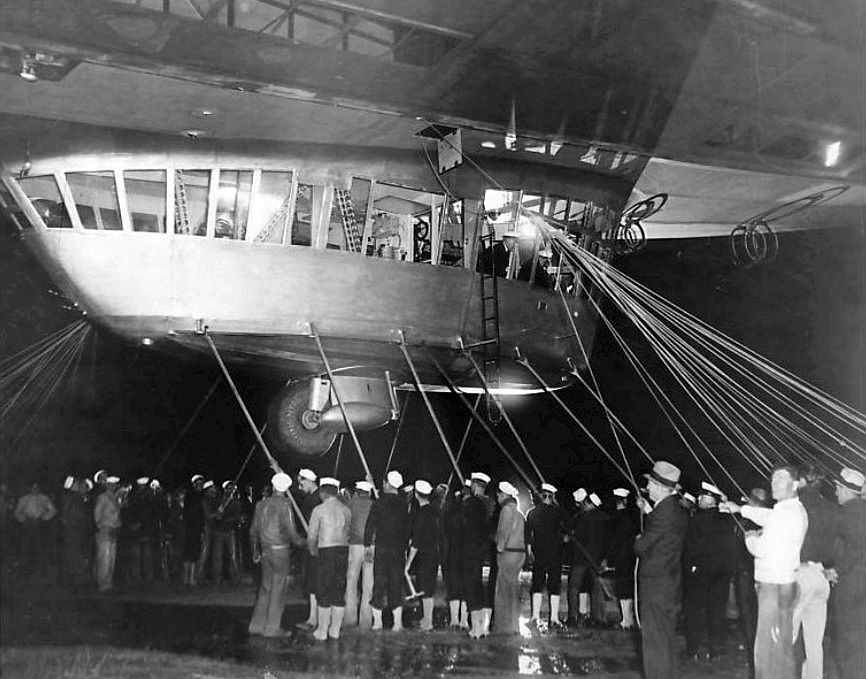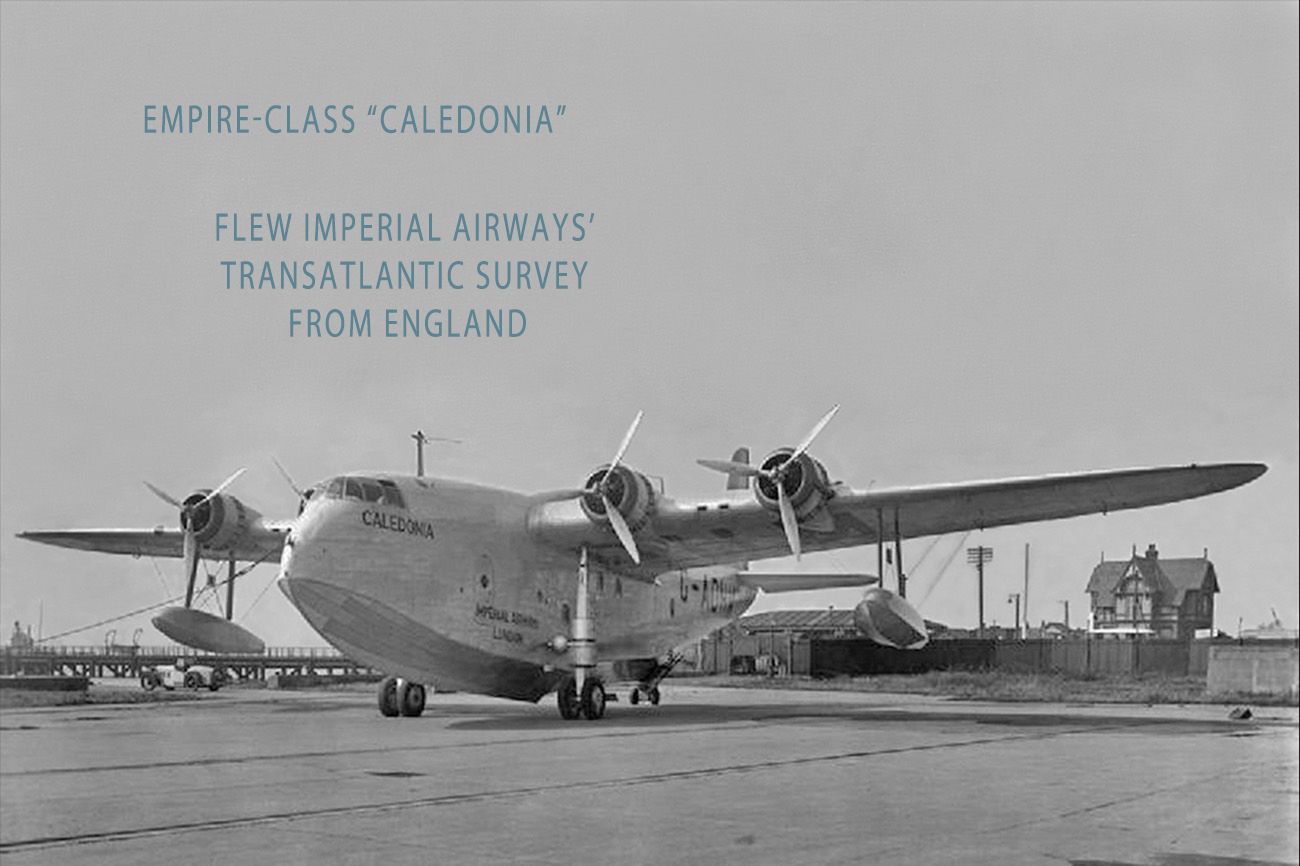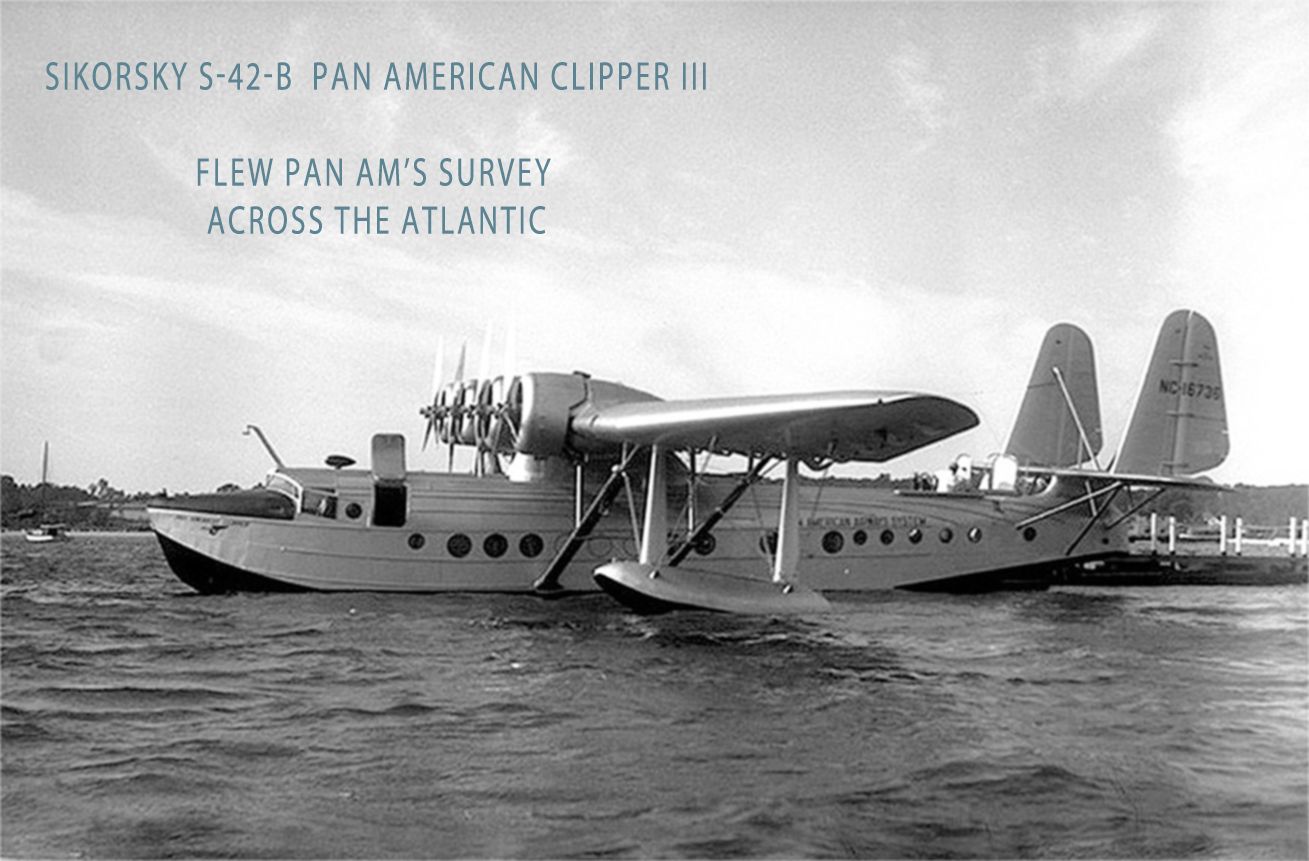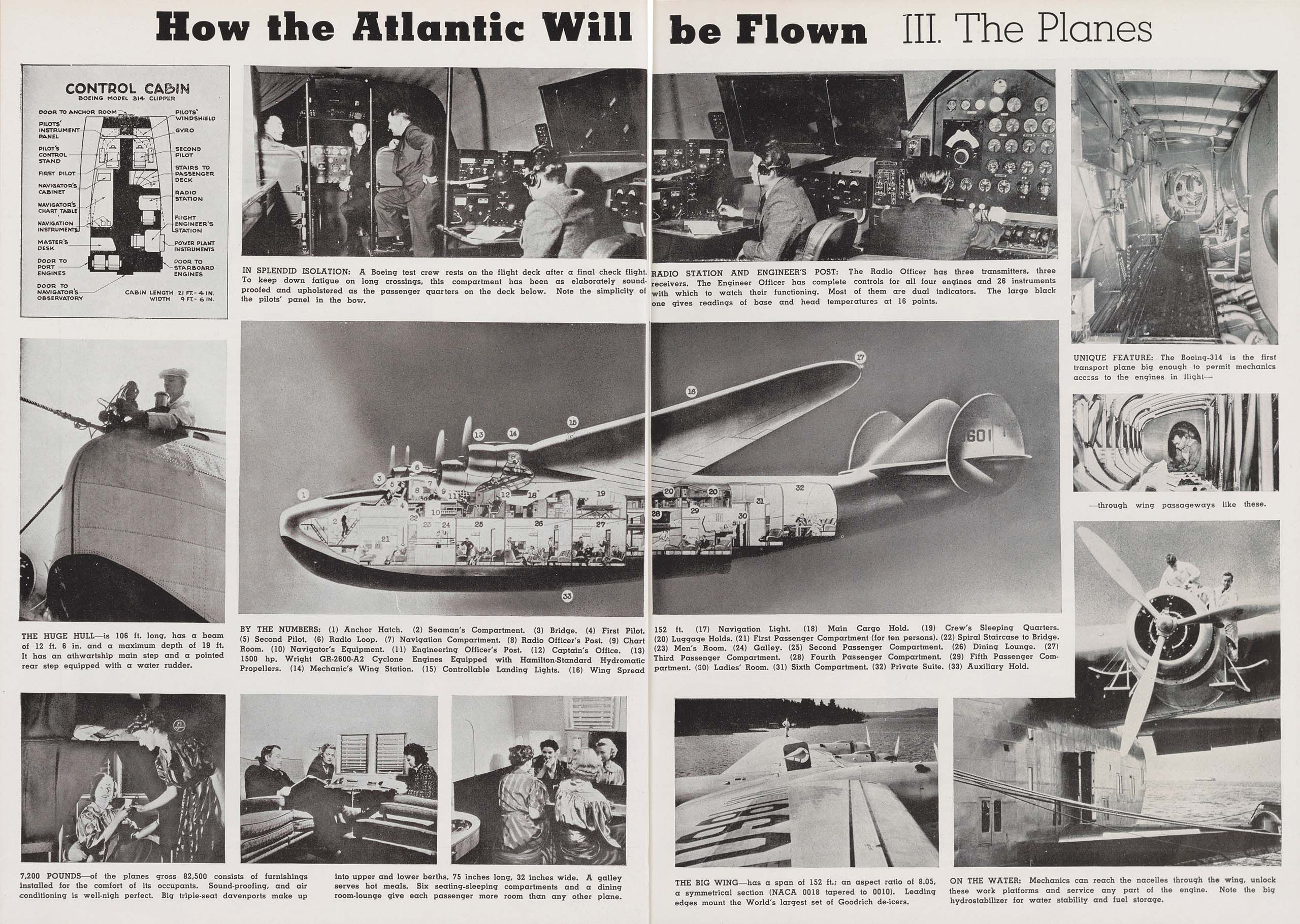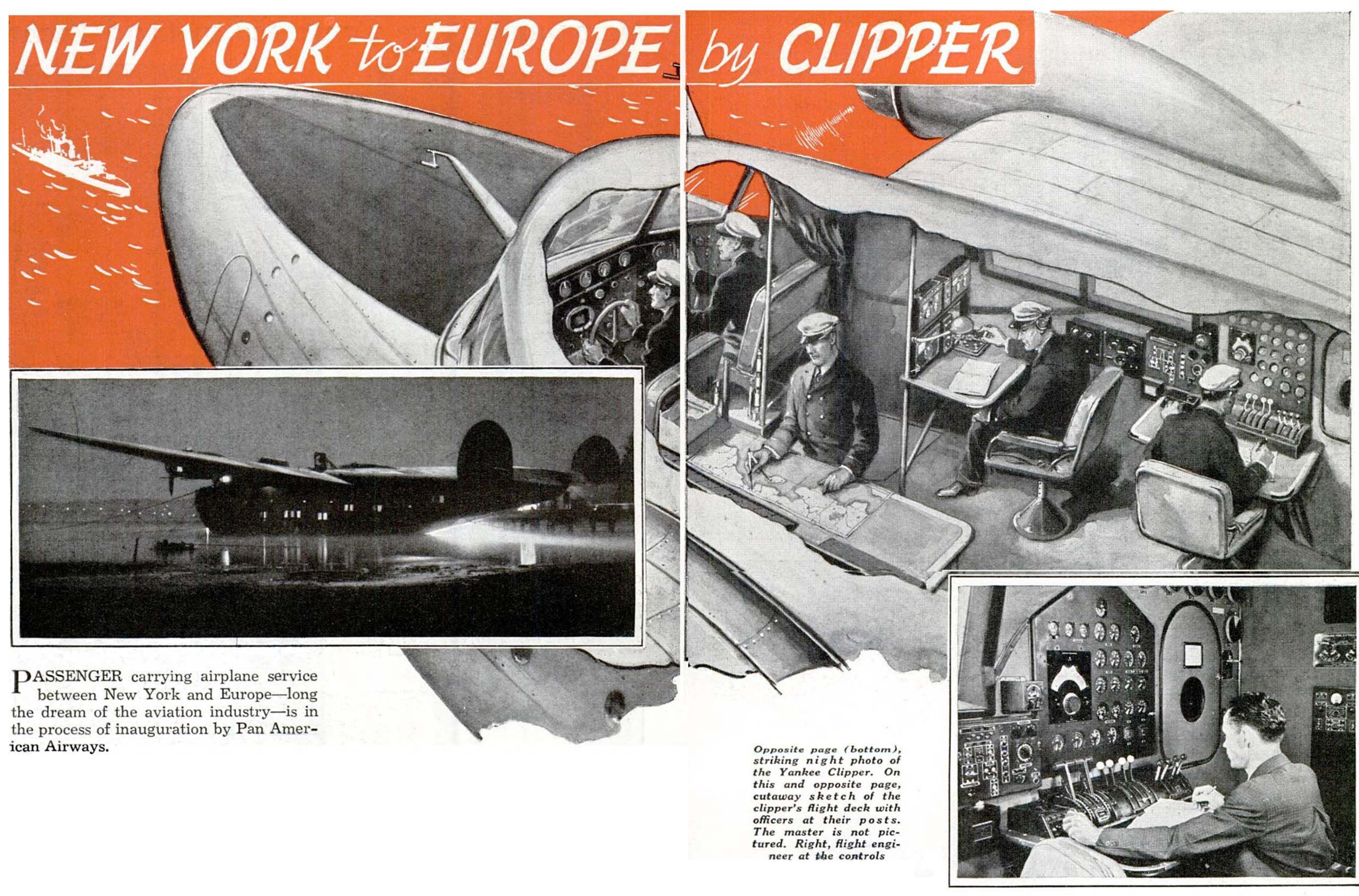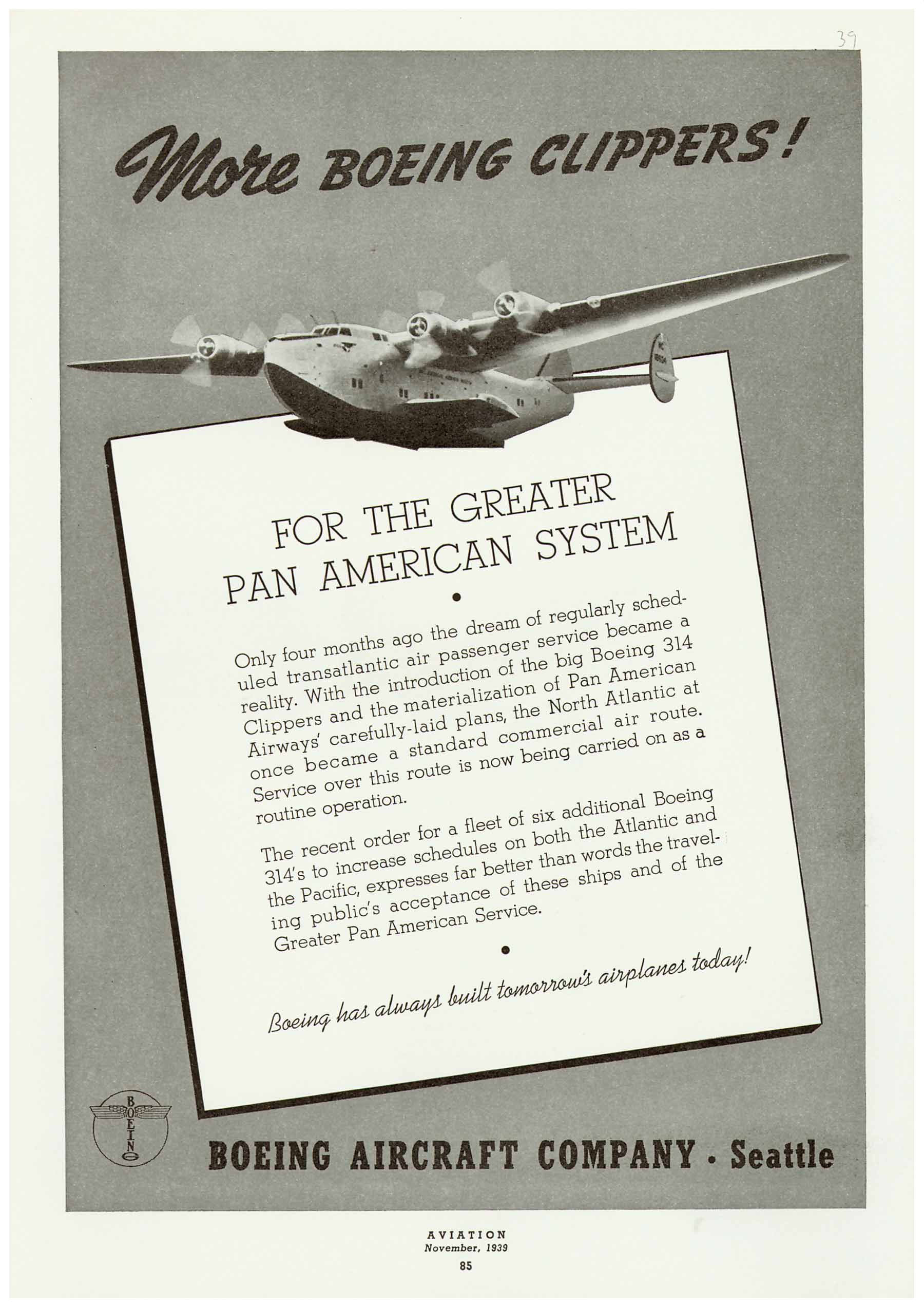A VISION
ACHIEVED
ACROSS
THE ATLANTIC
1939
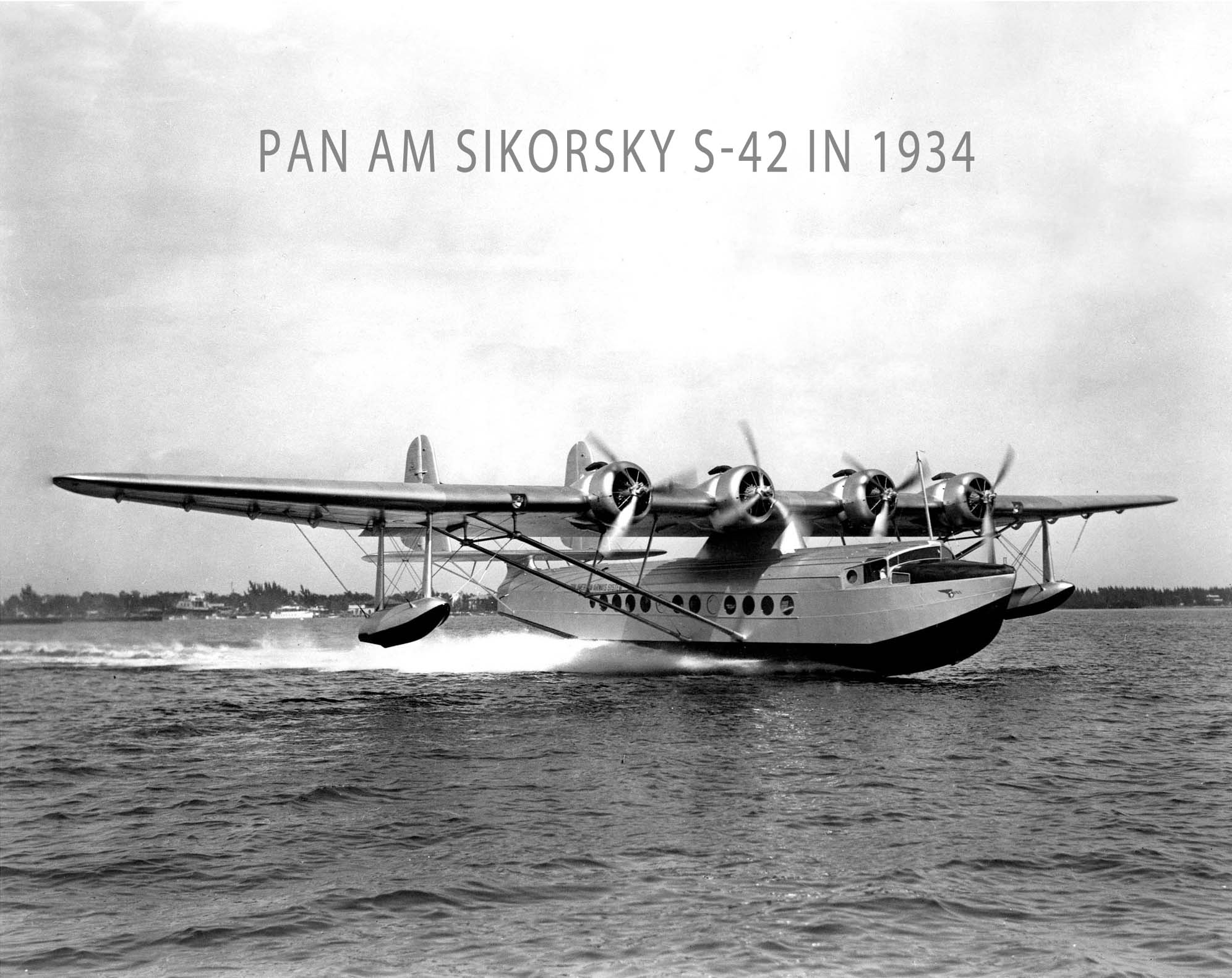
AVIATION'S COMMERCIAL VENTURES
Juan Trippe on the cover of TIME magazine, July 1933 (Pan Am Historical Foundation Collection).
Juan Trippe on the cover of TIME magazine, July 1933 (Pan Am Historical Foundation Collection).
Leading up to, and after Lindbergh's flight, there were other notable flights, successes and failures across the Atlantic. But all were one-off affairs — basically stunts. These flights quickly grabbed public attention but left nothing in their wake other than newspaper clippings.
ADVANCES IN AVIATION TECHNOLOGY AND THE COMMERCIAL INFRASTRUCTURE TO SUPPORT A ROBUST BUSINESS, NEVER CEASED.
Even with economic downturn of the Depression, business planners, manufacturers, and governments anticipated what was obviously over the horizon. On both sides of the Atlantic, plans were being made for a future filled with Atlantic crossings. And for the moment, it was still a vision filled — almost exclusively — with flying boats.
While Europeans, with their varied national interests and government-supported aviation companies worked on their own plans, in America there was only one player —Pan American Airways.
It was never lost on Juan Trippe that even a fraction of the annual transatlantic ocean liner traffic would be enough to fill up any airplanes he could acquire that could fly the ocean. With the help of Charles Lindbergh, acting as Chairman of Pan Am's technical committee, Pan Am put out a request for bids from various American aircraft manufacturers for an airplane that would have a sleeker design, a range of 2500 miles, capable of spanning the oceans, with increased capacity for fuel and mail.
Igor Sikorsky standing before an S-38 flying boat in Miami, c. 1930, (Courtesy of Miami Dade Public Library System).
Igor Sikorsky standing before an S-38 flying boat in Miami, c. 1930, (Courtesy of Miami Dade Public Library System).
Glenn L. Martin holding a Martin flying boat (American Association for the Advancement of Science Eureka Alert, https://www.eurekalert.org/multimedia/744885)
Glenn L. Martin holding a Martin flying boat (American Association for the Advancement of Science Eureka Alert, https://www.eurekalert.org/multimedia/744885)
Two M-130s and one S-42 at Pan Am maintenance.
Two M-130s and one S-42 at Pan Am maintenance.
LOOKING TO 1934
THE SIKORSKY AIRCRAFT & MARTIN COMPANIES
Only two of the six possible bidders replied. Trippe and Lindbergh announced their plans in a press conference on November 30, 1932. Sikorsky Aircraft and Glenn L. Martin Company would be building the next generation of Pan Am's airplanes, and would be ready sometime in 1934.
This was sensational news, and if the vision of transatlantic commercial flight was to become reality, there was a lot of geopolitical and logistical infrastructure development to be managed before any flights would carry mail or passengers. Routes had to be surveyed, and agreements signed with many foreign governments.
PAA SURVEY: ARCTIC TO AMAZON
In 1933 under the auspices of Pan America Airways, Charles and his wife Anne Morrow Lindbergh were soon out exploring the wide Atlantic in their small Lockheed Sirius floatplane, "Tingmissartoq," the plane they had flown to Asia two years before. Their expedition took five months, leaving the US in July and returning in December, just in time for the holidays.
VIDEO
July 1933, Charles and Anne Morrow Lindbergh take off at North Beach for Greenland on their 5-month Expedition from the Arctic to the Amazon via Europe and Africa (Archive.org).
July 1933, Charles and Anne Morrow Lindbergh take off at North Beach for Greenland on their 5-month Expedition from the Arctic to the Amazon via Europe and Africa (Archive.org).
The Lindberghs' adventure took them to Greenland, Iceland, Europe, Russia, flying down towards Africa and back across the ocean to South America. They even flew a thousand miles up the Amazon to Manaus before heading back to Miami. Their long, carefully recorded surveys revealed both useful knowledge, and some harsh truths about long-distance flying.
The Lindberghs' Pan Am odyssey sparked worldwide attention and enthusiasm along the way.
Top: Lindberghs in Greenland | Center: Route Map, "Atlantic Epic, 1933" by R.E.G. Davies. | Bottom: The Lindberghs in Para, Brazil with Paul Kuzmick, Chief Engineer for Panair do Brasil.
Sources: “Pan American Arctic survey flight: Greenland to Iceland transatlantic route, Charles A. Lindbergh, 1933.” (University of Miami Special Collections) pp. 30, 53. | "Atlantic Epic, 1933," from "Charles Lindbergh, An Airman his Aircraft and his Great Flights," by R.E.G. Davies, illustrated by Mike Machat, 1997, Paladwr Press, p. 45.
The Lindberghs' "Tingmissartoq" aircraft is now on display at the Smithsonian Air and Space Museum. Photo taken during survey flight for Pan Am in Greenland, 1933. (National Air and Space Museum, Smithsonian Institution).
VIDEO
Footage of the Lindberghs in the Netherlands during their 5-month long Transatlantic Survey in 1933.
JUAN TRIPPE'S GEOPOLITICAL CHALLENGE
Route Map published by Pan American Airways, 1939 (Aircraft Yearbook, 1940).
Route Map published by Pan American Airways, 1939 (Aircraft Yearbook, 1940).
Meanwhile, Trippe was doing some exploring of his own, looking for geopolitical arrangements that Pan Am could use to cross the Atlantic. The going was tough. Newfoundland was key for the northern route, but Trippe's early hopes were stymied when the British government intervened during a political crisis there. Bermuda, a British colony was just as much a problem for Trippe. Until the Brits had aircraft that could reciprocate the potential of Pan Am's new Martin and Sikorsky airplanes, they were standing fast to a policy of non-cooperation.
The Azores were also a problem for Trippe. The French company that had a concession for commercial air rights through the Portuguese territory had collapsed in bankruptcy and scandal. Any negotiated arrangement for Pan Am was now off the table.
And so, the future of commercial flight across the Atlantic went into a dormant phase
A PIVOT TO THE PACIFIC
In one of his most daring moves as airline empire builder — a trait he would demonstrate repeatedly during his forty years at the helm of Pan Am — Juan Trippe turned his sights towards another ocean, the Pacific. His new airplanes, while not exactly right for the job, could be made to work. The immense investment to build air bases across the Pacific, and the effort needed to get the US government onside with project, were manageable. It turned out to be an epic story, and one worth telling.
Learn more: "Across the Pacific" 3-part PBS documentary: https://www.panam.org/about-pahf/across-the-pacific-film
Learn more: "Across the Pacific" 3-part PBS documentary: https://www.panam.org/about-pahf/across-the-pacific-film
1937 — ATLANTIC REVIVAL
Until 1937, the skies over the Atlantic remained the sole province of sea birds and German airships, like the Hindenburg and Graf Zeppelin, that flew passengers across the ocean. Even Juan Trippe and his wife Betty flew on the Hindenburg in 1936.
But the way forward for commercial transoceanic air service was becoming more focused. The fiery demise of the Zeppelin Hindenburg in May 1937 buried hopes for further lighter-than-air service. The future of aviation now looked to be filled with flying boats, such as Norman Bel Geddes' mammoth fantasy design.
IMPERIAL & PAN AM
By 1937 the potential for long anticipated transatlantic service was once again beginning to seem real. The British had been working on new aircraft, known as Empire-class flying boats.
It was with this impressive new aircraft that the British national carrier, Imperial Airways, was willing to try out a reciprocal Atlantic service with Pan Am (which was still America's sole international air carrier). Not far behind, both Germany's Lufthansa and the French as well were making test flights from Europe to America, also cooperating with Pan American.
Both Imperial and Pan Am set out set out to complete transatlantic survey flights with the Imperial Empire-Class "Caledonia" flying from Foynes, Ireland, and Pan Am's Pan American Clipper III flying from Port Washington.
Pan Am to Bermuda (Don Thomas, Pan Am Historical Foundation collection), and New York Bermuda Timetable (University of Miami Special Collections).
Pan Am to Bermuda (Don Thomas, Pan Am Historical Foundation collection), and New York Bermuda Timetable (University of Miami Special Collections).
May 25, 1937, the first international air link between the US and Bermuda was officially established with a Pan Am survey from the US. The British flying boat Short S.23 "Cavalier" and Pan Am's S-42 "Bermuda Clipper" would operate reciprocal schedules to and from the British colony.
PAN AM PROVING FLIGHTS ACROSS THE ATLANTIC OCEAN - PAVING THE WAY FOR B-314s
Artist Clayton Knight's lithograph depicts a night scene with a Sikorsky S-42B over water, called ""Hornets Take the Sikorsky Pan American Clipper Across the Atlantic, 1937" (Illustration History: https://www.illustrationhistory.org/artists/clayton-knight).
Artist Clayton Knight's lithograph depicts a night scene with a Sikorsky S-42B over water, called ""Hornets Take the Sikorsky Pan American Clipper Across the Atlantic, 1937" (Illustration History: https://www.illustrationhistory.org/artists/clayton-knight).
The first went to Shediac, the next to Botwood, the next two to Southampton by the northern route, and finally to Southampton via the Central Atlantic.
On June 24, 1937 "Pan American Clipper III," a brand new Sikorsky S-42B aircraft (NC16736), was piloted by Capt. Harold E. Gray. He began a set of five historic proving flights across the Atlantic Ocean.
The first two were relatively short, as Gray took the first flight to New Brunswick and the second to Newfoundland, Canada.
But in July and early August 1937, Gray completed two more surveys, stretching crossing the entire Atlantic Ocean on the northern route through Canada via Foynes, Ireland to reach its final destination of Southampton.
On August 16th, for the fifth and final survey, Capt. Gray left Port Washington and headed for Bermuda. Flying out of Hamilton on the night of the 17th, he traveled on a more southerly flight path to the Azores. From there he flew on to Lisbon, making his final landing in Southampton, England.
Harold Gray's surveys paved the way for Pan Am's passenger service to Europe in June 1939, using Boeing B-314 flying boats.
VIDEO
The first step across the Atlantic: The production, Five Hours to Bermuda (1937) shows passengers traveling between New York to Bermuda in a reciprocal arrangement between Pan Am ((Sikorsky S-42 Bermuda Clipper) and British Imperial Airways (Empire flying boat, Cavalier).
The Hindenburg heads home, May 1936 (Wikimedia Commons).
The Hindenburg heads home, May 1936 (Wikimedia Commons).
Concept drawing: Airliner Number 4 by Norman Bel Geddes, c. 1929 (Wikimedia Commons).
Concept drawing: Airliner Number 4 by Norman Bel Geddes, c. 1929 (Wikimedia Commons).
Imperial Airways' "Caledonia" (Wikimedia Commons).
Imperial Airways' "Caledonia" (Wikimedia Commons).
Imperial Airways' "Caledonia" (Wikimedia Commons).
Imperial Airways' "Caledonia" (Wikimedia Commons).
THE BOEING 314
"How the Atlantic Will Be Flown." by Hugo Leuteritz, Pan Am Radio Engineer (University of Miami Special Collections, Pan American World Airways, Inc. records).
"How the Atlantic Will Be Flown." by Hugo Leuteritz, Pan Am Radio Engineer (University of Miami Special Collections, Pan American World Airways, Inc. records).
But a more realistic future was about to emerge in the form of Boeing's new "super Clipper," the B-314. It would outstrip all of Pan Am's previous flying boats in capacity and range. The B-314 would mark the zenith of commercial flying boat evolution.
Although the planes were being built in Seattle, most of their use was to be across the Atlantic, where four of the first six aircraft built went to operate. It wasn't until May 27, 1939 that Pan Am's Capt. "Mike" LaPorte left the base at Port Washington, Long Island on the first scheduled mail-only trip on the Yankee Clipper, NC18603. It was the long-anticipated opening Pan Am's — and the world's — transatlantic commercial air service. That flight, and several thereafter, were bound for Southampton England, with stops at Horta, Lisbon, and Marseilles.
VIDEO: FIRST MAIL - YANKEE CLIPPER
The very first Transatlantic Mail Service on Pan Am's mid-Atlantic route, with Captain LaPorte piloting B-314 Yankee Clipper, May 1939. New York - Azores - Lisbon - Marseilles - Southampton.
The very first Transatlantic Mail Service on Pan Am's mid-Atlantic route, with Captain LaPorte piloting B-314 Yankee Clipper, May 1939. New York - Azores - Lisbon - Marseilles - Southampton.
LISTEN
FIRST RADIO BROADCAST FROM A PASSENGER PLANE ACROSS THE ATLANTIC
Reporter Bob Trout describes the Press Flight of Pan Am's B-314 "Atlantic Clipper," piloted by Capt. Wallace Culbertson to Horta, Lisbon and Marseilles, 06/17/1939.
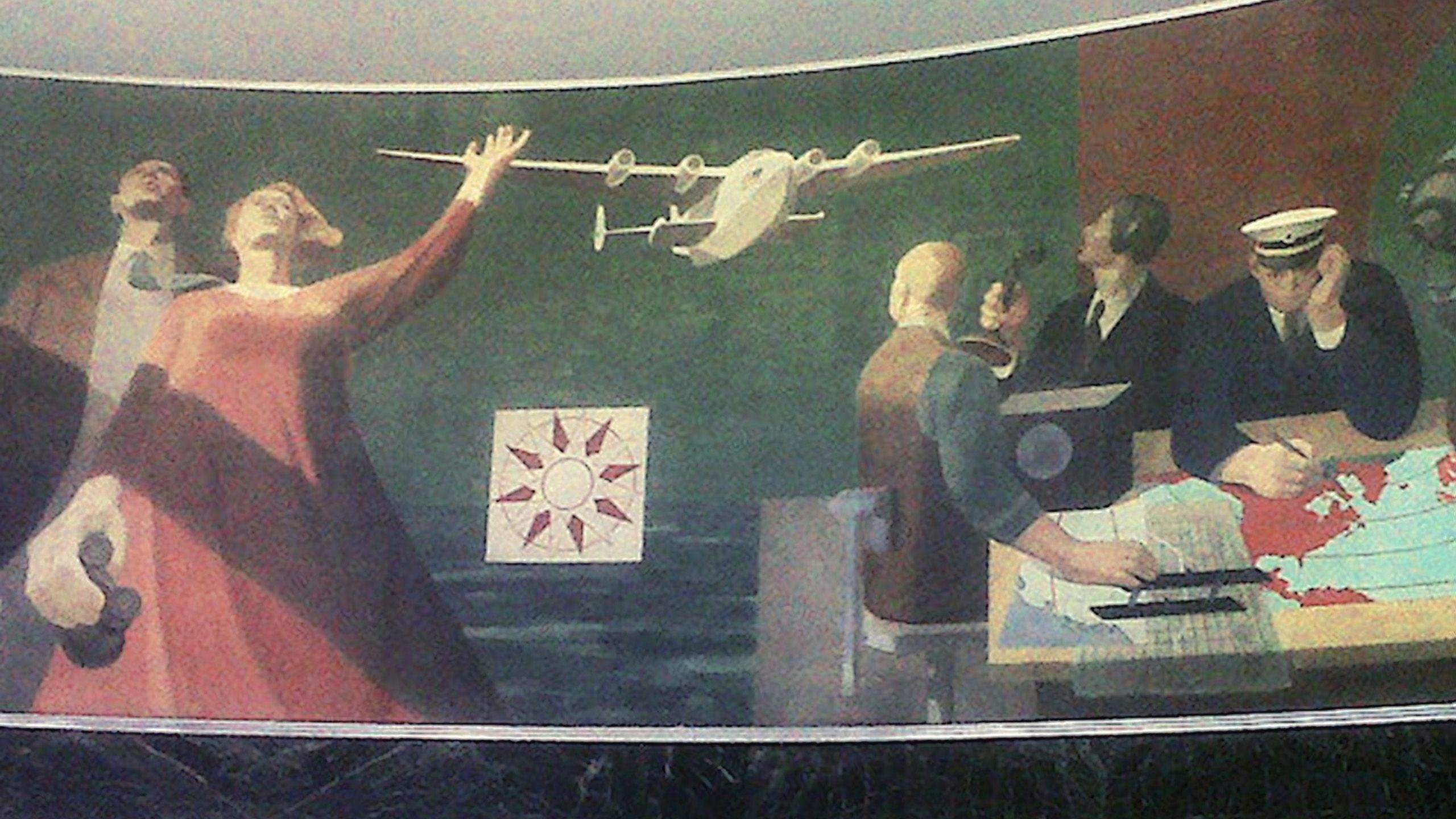
FIRST PASSENGERS — DIXIE CLIPPER
A Page from William J. Eck’s scrapbook from Pan American's First Transatlantic Flight. in "Passenger Number One" by Elizabeth Borja, National Air and Space Museum, published June 28, 2019. Photos (clockwise): Dining on board / Stewards Condotti and Salmini/ Center Front Page of a Christmas Card from stewards Condotti and Salmini/ Forward instrument panels in the cockpit of Boeing 314 Clipper / Passengers outside the Dixie Clipper.
It seemed as if the world had finally come of age, with aviation reaching the potential promised over a quarter of a century before with that first flying boat — "America." But the exhilaration of this new transoceanic connection was short-lived. Less than one hundred days after the Yankee Clipper's first transatlantic mail flight, Europe was at war. And once more Aviation's progress would bend to the demands of national defense. But there would be no more critical battlefield in this new war than the Atlantic Ocean, and no more important weapon than aircraft that could manage Atlantic crossings.
1930sCLIPPER ADS
Yankee Clipper Ad (Popular Science, 1939).
Yankee Clipper Ad (Popular Science, 1939).
"More Boeing Clippers" Boeing Ad (Pan Am Historical Foundation collection).
"More Boeing Clippers" Boeing Ad (Pan Am Historical Foundation collection).

